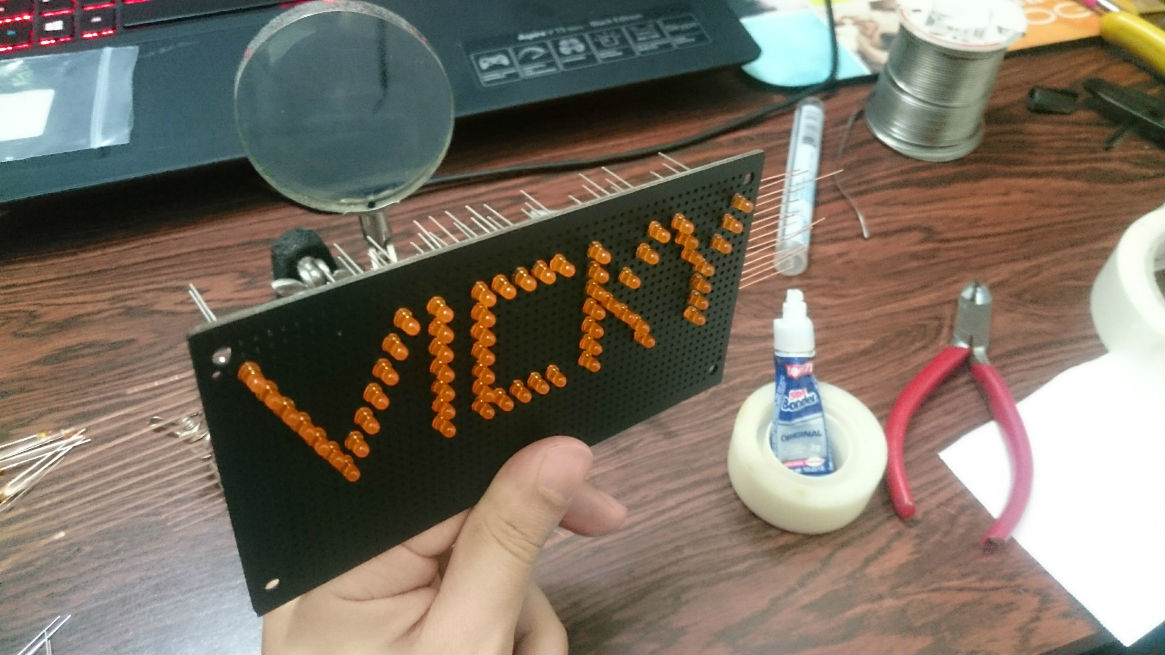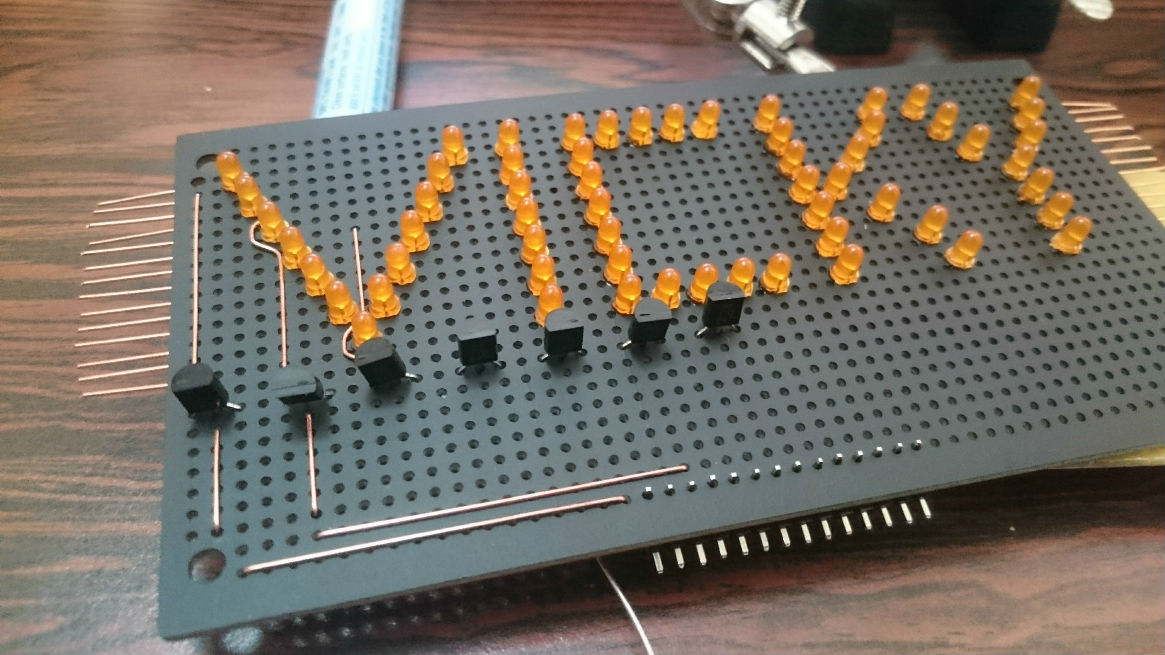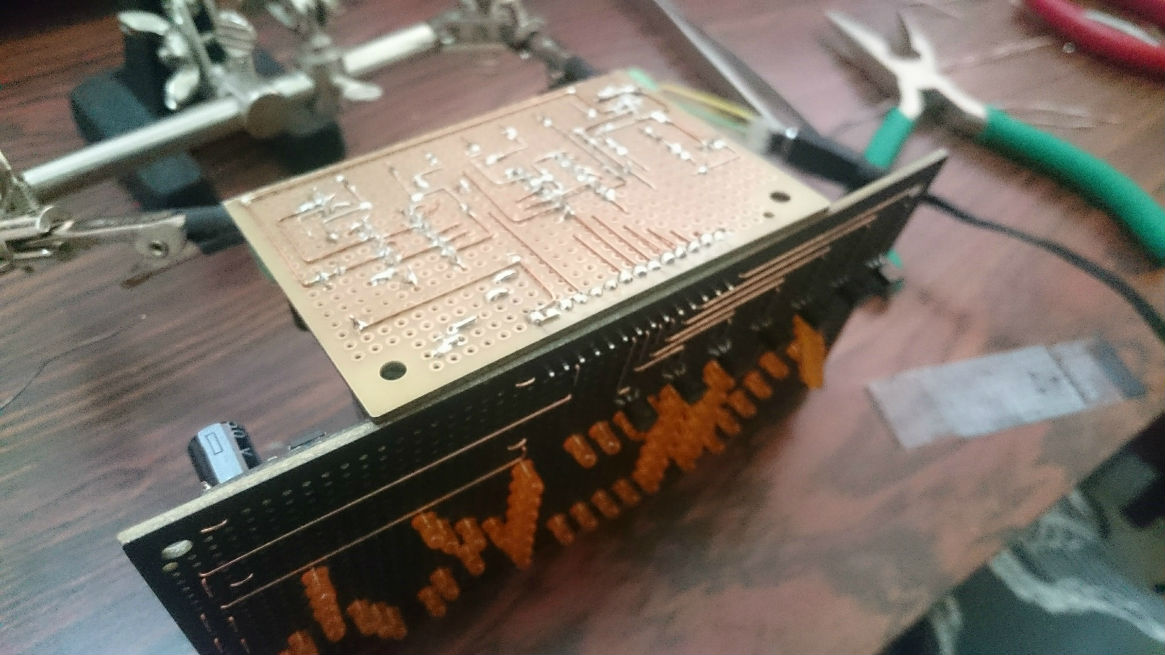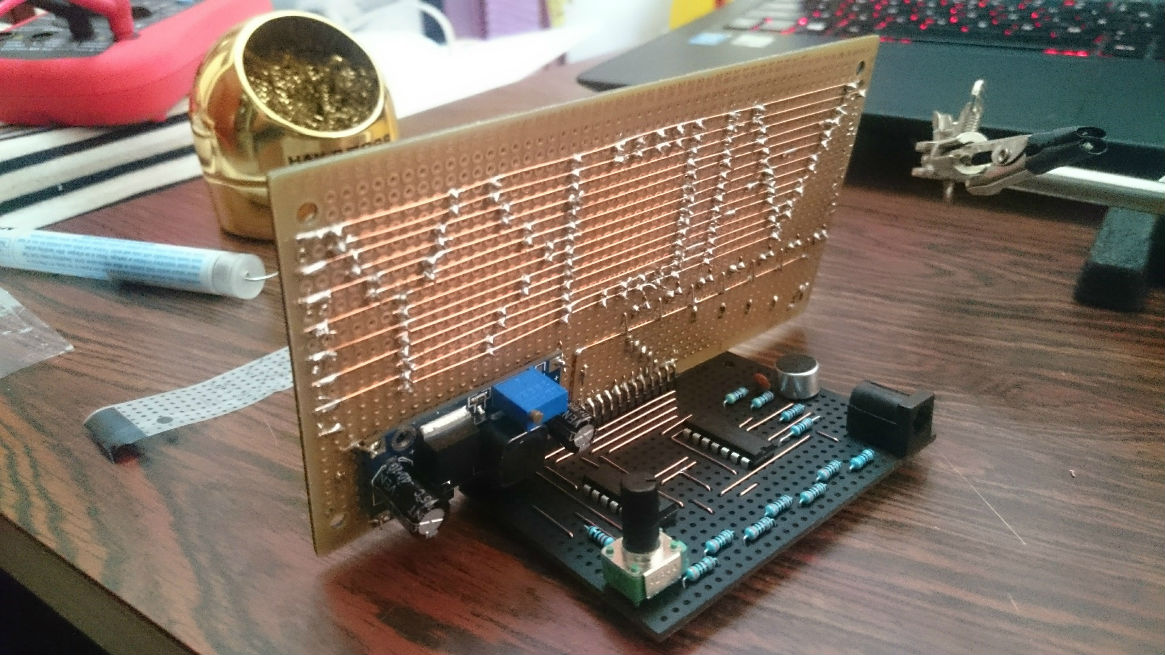VU Meter

A VU or Volume Unit meter is a device that displays a representation of a signal level, used in audio equipment.
This VU meter is made up of 7 rows of voltage-matched LEDs wired in parallel, these LEDs are driven by 7 switching MOSFET transistors. This “risky” parallel arrangement -which can potentially overdrive LEDs- bypasses the need to connect them in series, this:
- Avoids the use of current-limiting resistors, which would waste current.
- Not having to use higher (matched) voltages for each row, which would increase the complexity of the circuit.
A condenser microphone captures ambient audio. This microphone is wired to an op-amp in a 100x amplifier configuration. The amplified signal runs through 7 comparator op-amps which compare it with various voltage levels, if there is a loud enough ambient sound -like some background music is playing- the op-amps progressively switch the 7 transistors, lighting up the led rows.
The whole circuit can be powered from a single 5v 1A regulated power supply.
The sensitivity of the VU meter can be adjusted by varying the comparator voltages, lower voltages make the VU meter become more sensible to sound, and vice versa. Also, the brightness of the LEDs is adjustable, this is done by changing the voltage that the LED’s are being driven at, taking advantage of their diode properties.
The gallery below shows some of the pictures taken while building the circuit, which is separated into two boards: The vertical board contains the LEDs and the driver transistors, while the bottom board contains the microphone, the op-amps and other passive elements.
Gallery







